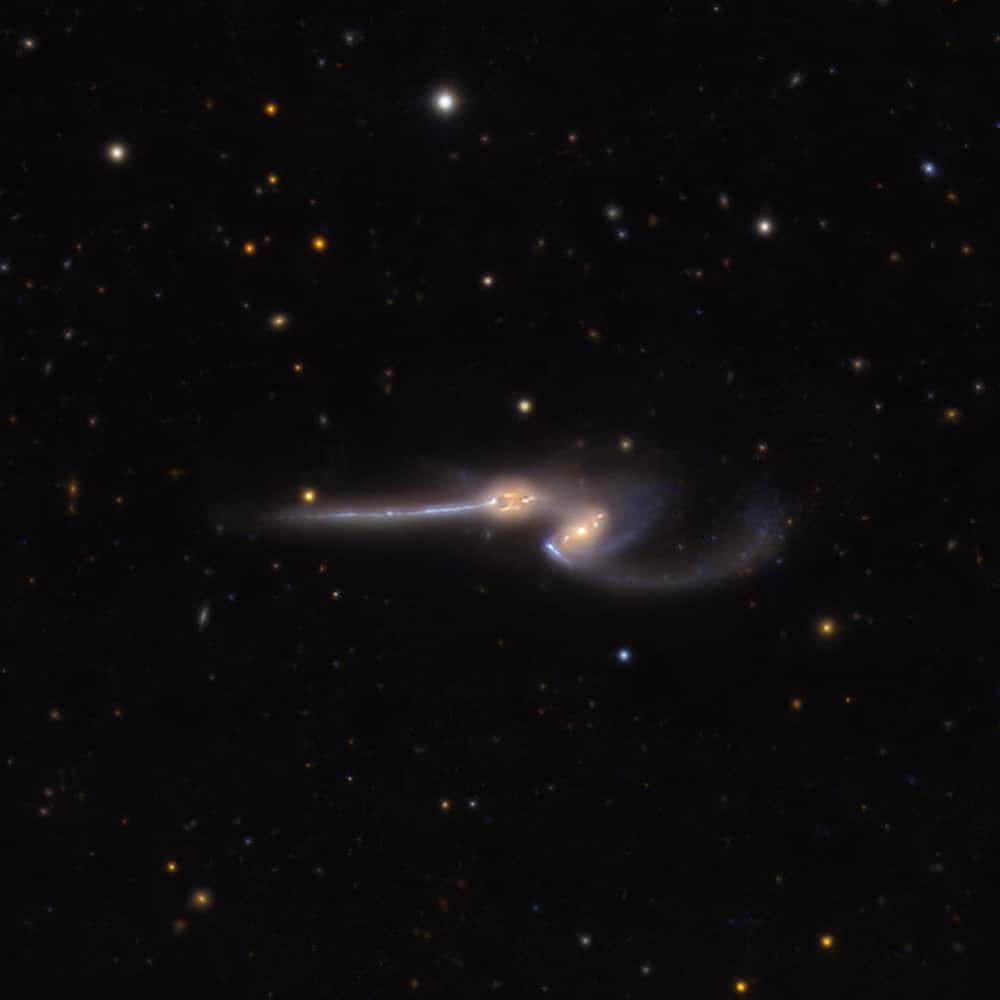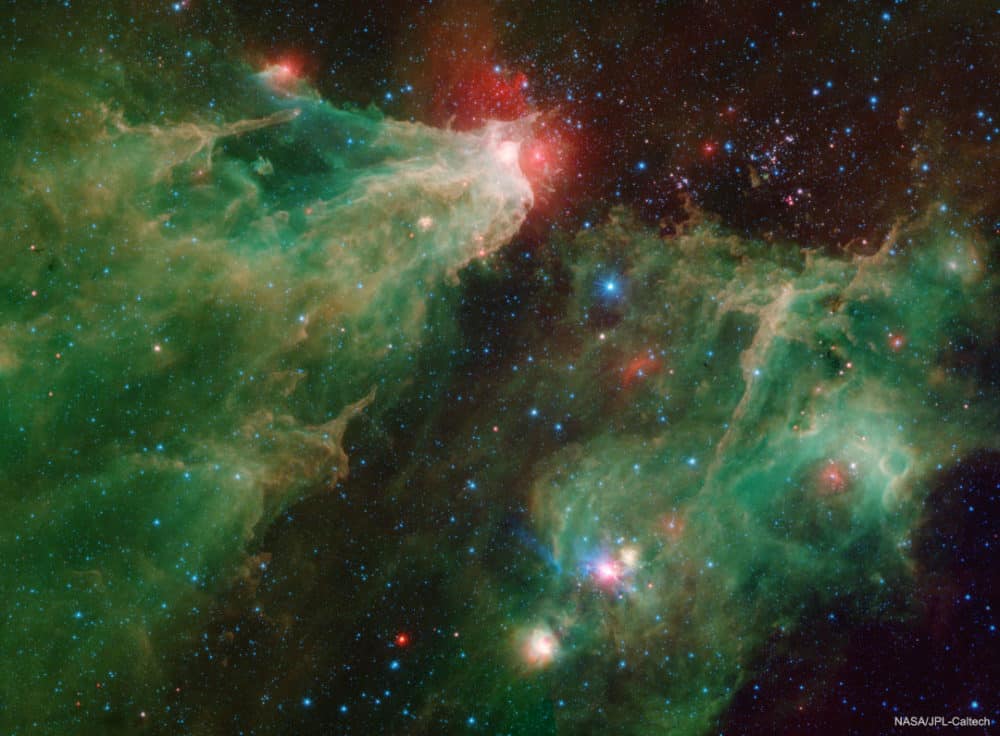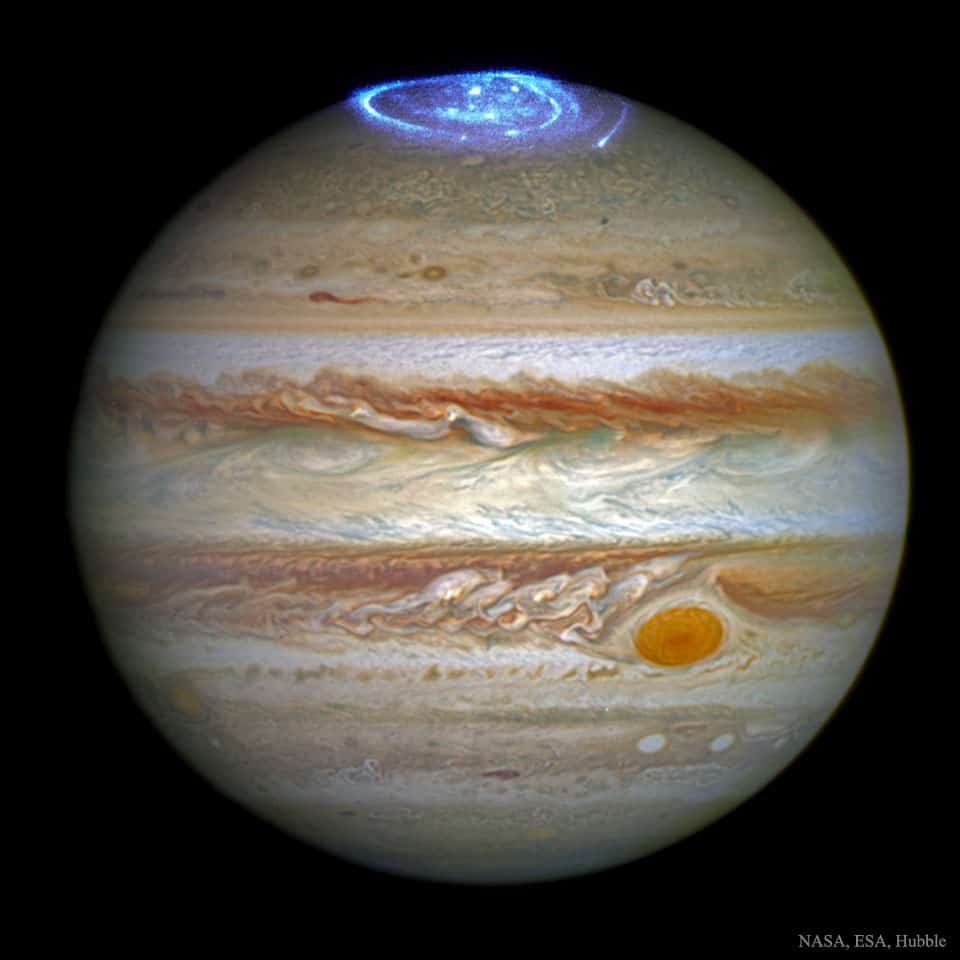Blog
So Africa
more...These two mighty galaxies are pulling each other apart. Known as The Mice because they have such long tails, each large spiral galaxy has actually passed through the other. Their long tails are drawn out by strong gravitational tides rather than collisions of their individual stars. Because the distances are so large, the cosmic interaction takes place in slow motion — over hundreds of millions of years. They will probably collide again and again over the next billion years until they coalesce to form a single galaxy. NGC 4676 lies about 300 million light-years away toward the constellation of Bernice’s Hair (Coma Berenices) and are likely membersof the Coma Cluster of Galaxies. Not often imaged in small telescopes, this wide field of view catches the faint tidal tails several hundred thousand light-years long.
more...Marcus Miller (born William Henry Marcus Miller Jr.; June 14, 1959) is an American jazz composer, producer and multi-instrumentalist, best known as a bass guitarist. He has worked with trumpeter Miles Davis, pianist Herbie Hancock, singer Luther Vandross, and saxophonist David Sanborn, among others. Miller was born in Brooklyn, New York City, in 1959 and raised in a musical family that included his father, William Miller (a church organist and choir director) and jazz pianist Wynton Kelly. He is classically trained as a clarinetist and also plays keyboards, saxophone and guitar. He began to work regularly in New York City, eventually playing bass and writing music for jazz flutist Bobbi Humphrey and keyboardist Lonnie Liston Smith. Miller soon became a session musician, appearing on over 500 albums by such artists as Michael Jackson, Beyoncé, Herbie Hancock, Mariah Carey, The Crusaders, Wayne Shorter, McCoy Tyner, Frank Sinatra, George Benson, Dr. John, Aretha Franklin, Elton John, Joe Walsh, Jean-Michel Jarre, Grover Washington Jr., Donald Fagen, Bill Withers, Bernard Wright, Kazumi Watanabe, Chaka Khan, LL Cool J and Flavio Sala.
Kenny Drew Jr. (June 14, 1958 – August 3, 2014) was an American jazz pianist. His music is known for its hard-swinging bluesy sound and large, two-handed rooty chords contrasting with fast runs. The son of jazz pianist Kenny Drew, he did not credit his father as an influence. His initial study was in classical music with his aunt and grandmother. In his teens he became interested in jazz and pop, but initially worked in funk bands. Later he went into jazz piano and in 1990 won the Great American Jazz Piano competition in Jacksonville, Florida. Drew continued to perform jazz, but he also performed some chamber music. His style has some similarities to his father’s, but is different enough to generally avoid comparison; he was considered the more eclectic of the two men.
Drew attended Iona College in New Rochelle, New York, for a period during 1977 to 1978. There, he became pianist for the Iona College Singers, an entertainment troop promoting the college’s name and goodwill among local high schools, retirement homes and the like in the Northeast region of the USA.
Drew cited Thelonious Monk as an influence and like Monk often recorded (and performed) solo.
Drew died at home in St. Petersburg, Florida, on August 3, 2014
https://www.youtube.com/watch?v=7j409BULnuQ
more...Flamenco Fridays featuring palo Bulerias.
The basic structure of bulerías
Bulerías, like other flamenco forms, has its own language. When we dance we are in conversation with the singer, the guitarist, and the palmeros. The structure offers a formula for clear communication, and it looks like this:
- Salida
- Marcaje(s)
- Paso de bulerías
- Llamada
- Patá (Patada)
- (Another Marcaje or Paso de Bulerías)
- Llamada
- Final
The Spitzer Space Telescope looked into this optically-dark star-forming region in four colors of infrared light. The Cave Nebula, cataloged as Sh2-155, is quite bright in infrared, revealing details not only of internal pillars of gas and dust, but of the illuminating star cluster too – all near the top of the image. The red glow around the Cave’s entrance is created by dust heated by bright young stars. To the right is Cepheus B, a star cluster that formed previously from the same cloud of gas and dust. Other interesting stars of Cepheus come to light in infrared as well, including those illuminating an even younger nebula toward the image bottom, and a runaway star pushing a bow shock, tinged in red near the image center. This region spans about 50 light years and lies about 2,500 light years toward the constellation of the King of Aethiopia (Cepheus).
more...
Adolphus Anthony Cheatham, better known as Doc Cheatham (June 13, 1905 – June 2, 1997), was a jazz trumpeter, singer, and bandleader. Doc Cheatham was born in Nashville, Tennessee of African, Cherokee and Choctaw heritage. He noted there was no jazz music there in his youth; like many in the United States he was introduced to the style by early recordings and touring groups at the end of the 1910s. He abandoned his family’s plans for him to be a pharmacist (although retaining the medically inspired nickname “Doc”) to play music, initially playing soprano and tenor saxophone in addition to trumpet in Nashville’s African American Vaudeville theater. Cheatham later toured in band accompanying blues singers on the Theater Owners Booking Association circuit.[1] His early jazz influences included Henry Busse and Johnny Dunn, but when he moved to Chicago in 1924 he heard King Oliver. Oliver’s playing was a revelation to Cheatham. Cheatham followed the jazz King around. Oliver gave young Cheatham a mute which Cheatham treasured and performed with for the rest of his career. A further revelation came the following year when Louis Armstrong returned to Chicago. Armstrong would be a lifelong influence on Cheatham.
Cheatham played in Albert Wynn’s band (and occasionally substituted for Armstrong at the Vendome Theater), and recorded on sax with Ma Rainey before moving to Philadelphia in 1927, where he worked with the bands of Bobby Lee and Wilbur de Paris before moving to New York City the following year. After a short stint with Chick Webb he left to tour Europe with Sam Wooding‘s band.
more...Attila Cornelius Zoller (June 13, 1927 – January 25, 1998) was a jazz guitarist born in Hungary. After World War II, he escaped the Soviet takeover of Hungary by fleeing through the mountains on foot into Austria. In 1959, he moved to the U.S., where he spent the rest of his life as a musician and teacher. Zoller was born in Visegrád, Hungary in 1927. As a child, he learned violin from his father, a professional violinist. While in school, he played flugelhorn and bass before choosing guitar. He dropped out of school and played in jazz clubs in Budapest while Russia occupied Hungary. He fled Hungary in 1948 as the Soviet Union was establishing communist military rule. He escaped on foot, carrying his guitar through the mountains into Austria. He settled in Vienna, became an Austrian citizen, and started a jazz group with accordionist Vera Auer.
In the 1950s, Zoller moved to Germany and played with German musicians Jutta Hipp and Hans Koller. When American jazz musicians passed through, such as Oscar Pettiford and Lee Konitz, they persuaded him to move to the United States. He moved to the U.S. after receiving a scholarship to the Lenox School of Jazz. One of his teachers was guitarist Jim Hall and his roommate was Ornette Coleman, who got him interested in free jazz.
From 1962–1965, Zoller performed in a group with flautist Herbie Mann, then Lee Konitz and Albert Mangelsdorff. Over the years, he played and recorded with Benny Goodman, Stan Getz, Red Norvo, Jimmy Raney, Herbie Hancock, Ron Carter, Shirley Scott, Cal Tjader, and Jimi Hendrix.
more...Batá drumming is getting more and more popular these days. With a lot of the masters who transmitted the tradition of batá drumming having passed away, the one living master today is Román Diaz, born in Cuba, now residing in New York City.
more...Positive Vibrations quartet with Van Nixon, Onesmo Kibira, JD and mick laBriola. Performing 6-12-19 from 3-6pm to an open to the public event @ St Mary’s University Event Center Ballroom at 2540 Park Ave So Minneapolis for Ebenezer’s 101st Annual Ice Cream Social.
https://deafmn.com/event/ebenezers-101st-annual-ice-cream-social/
more...
Dust lanes seem to swirl around the core of Messier 96 in this colorful, detailed portrait of the center of a beautiful island universe. Of course M96 is a spiral galaxy, and counting the faint arms extending beyond the brighter central region, it spans 100 thousand light-years or so, making it about the size of our own Milky Way. M96, also known as NGC 3368, is known to be about 35 million light-years distant and a dominant member of the Leo I galaxy group. The featured image was taken by the Hubble Space Telescope. The reason for M96‘s asymmetry is unclear — it could have arisen from gravitational interactions with other Leo I group galaxies, but the lack of an intra-group diffuse glow seems to indicate few recent interactions. Galaxies far in the background can be found by examining the edges of the picture.
more...Armando Anthony “Chick” Corea (born June 12, 1941) is an American jazz pianist/electric keyboardist and composer.His compositions “Spain“, “500 Miles High“, “La Fiesta” and “Windows“, are considered jazz standards. As a member of Miles Davis‘s band in the late 1960s, he participated in the birth of jazz fusion. In the 1970s he formed the fusion band Return to Forever. With Herbie Hancock, McCoy Tyner, and Keith Jarrett, he has been described as one of the major jazz piano voices to emerge in the post-John Coltrane era.
Corea continued to pursue other collaborations and to explore musical styles throughout the 1980s and 1990s. He is also known for promoting and fundraising for a number of social issues. Armando Corea was born in Chelsea, Massachusetts. He is of southern Italian and Spanish descent. His father, a jazz trumpeter who led a Dixieland band in Boston in the 1930s and 1940s, introduced him to the piano at the age of four. Surrounded by jazz, he was influenced at an early age by bebop and Dizzy Gillespie, Charlie Parker, Bud Powell, Horace Silver, and Lester Young. At eight he took up drums, which would influence his use of the piano as a percussion instrument.
In the early 1970s, Corea took a profound stylistic turn from avant-garde to a crossover jazz fusion style that incorporated Latin jazz with Return to Forever. Named after their eponymous 1972 album, the band relied on both acoustic and electronic instrumentation and drew upon Latin American styles more than on rock music. On their first two records, Return to Forever consisted of Flora Purim on vocals, Joe Farrell on flute and soprano saxophone, Airto Moreira on drums , and Stanley Clarke on double bass.[3] Drummer Lenny White and guitarist Bill Connors later joined Corea and Clarke to form the second version of the group, which expanded the earlier Latin jazz elements with a more rock and funk-oriented sound inspired by the Mahavishnu Orchestra, led by his Bitches Brew bandmate John McLaughlin. This incarnation of the group recorded the album Hymn of the Seventh Galaxy, before Connors’ departure and replacement by Al Di Meola, who was present on the subsequent releases Where Have I Known You Before, No Mystery, and Romantic Warrior.
Corea’s composition “Spain” appeared on the 1972 Return to Forever album Light as a Feather. This is probably his most popular piece, and it has been recorded by a variety of artists. There are also a variety of recordings by Corea himself. These included an arrangement for piano and symphony orchestra that appeared in 1999 and a collabration with vocalist Bobby McFerrin on the 1992 album Play. Corea usually performs “Spain” with a prelude based on Joaquín Rodrigo‘s Concierto de Aranjuez(1940), which earlier received a jazz orchestration on Davis and Gil Evans‘ Sketches of Spain.[citation needed]
In 1976, he issued My Spanish Heart, influenced by Latin American music and featuring vocalist Gayle Moran (Corea’s wife) and electric violinist Jean-Luc Ponty. The album combined jazz and flamenco, supported by Minimoog backup and a horn section.
https://www.youtube.com/watch?v=BlSUt0_jHAI
Marcus Batista Belgrave (June 12, 1936 – May 24, 2015) was an American jazz trumpet player from Detroit, born in Chester, Pennsylvania. He recorded with numerous musicians from the 1950s onwards. Belgrave was inducted into the class of 2017 of the National Rhythm & Blues Hall of Fame in Detroit, Michigan.
Belgrave was tutored by Clifford Brown before joining the Ray Charles touring band. He later worked with Motown Records, and recorded with Martha Reeves and the Vandellas, The Temptations, The Four Tops, Gunther Schuller, Carl Craig, Max Roach, Ella Fitzgerald, Charles Mingus, Tony Bennett, La Palabra, Sammy Davis Jr., Dizzy Gillespie, Odessa Harris[4] and John Sinclair, plus more recently with his wife Joan Belgrave, amongst others.
more...From Samiland Norway
more...Dub version of Jump Nyabinghi
more...Jupiter will align with Earth and the sun tonight, standing alongside our planet and the fiery star in a perfect straight line.
This phenomenon, known as opposition, occurs just once every 13 months and finds the gas giant reaching its closest distance to Earth. Most significantly for space enthusiasts, opposition marks the year’s most optimal Jupiter viewing conditions, enabling binocular-equipped watchers to easily spot the planet and perhaps even a few of its 79 moons.
According to Vox’s Brian Resnick, Jupiter will grace the southeastern sky at dusk and remain visible until setting in the west at dawn. Those with binoculars should be able to see both the enormous planet, officially the largest in our solar system, and its four brightest moons—Io, Europa, Callisto and Ganymede. If you own a telescope, you may also be able to make out individual cloud bands and Jupiter’s characteristic Great Red Spot.
To locate Jupiter, simply look to the southeast and find the brightest object in the sky, excluding Venus and the moon, as Inverse’s Scott Snowden points out. Although the precise moment of opposition will take place at 6 p.m. Eastern time, Sky & Telescope’s Bob King writes that the planet will reach ideal viewing height around 11:30 p.m. and will remain visible through sunrise, or roughly 7 a.m.
Jupiter will be well placed for observation, in the constellation Ophiuchus. It will be visible for much of the night, reaching its highest point in the sky at around midnight local time.
From Minneapolis, it will be visible between 21:43 and 04:38. It will become accessible at around 21:43, when it rises 7° above your south-eastern horizon, and then reach its highest point in the sky at 01:13, 22° above your southern horizon. It will become inaccessible at around 04:38 when it sinks to 7° above your south-western horizon.
Jupiter has aurorae. Like Earth, the magnetic field of the gas giant funnels charged particles released from the Sun onto the poles. As these particles strike the atmosphere, electrons are temporarily knocked away from existing gas molecules. Electric force attracts these electrons back. As the electrons recombine to remake neutral molecules, auroral light is emitted. In the featured recently released composite image by the Hubble Space Telescope taken in ultraviolet light, the aurorae appear as annular sheets around the pole. Unlike Earth’s aurorae, Jupiter’s aurorae include several bright streaks and dots. Jupiter’s Great Red Spot is visible on the lower right. Recent aurorae on Jupiter have been particularly strong — a fortunate coincidence with the arrival of NASA’s Juno spacecraft at Jupiter last week. Juno was able to monitor the Solar Wind as it approached Jupiter, enabling a better understanding of aurorae in general, including on Earth.
more...
Bernard Lee “Pretty” Purdie (born June 11, 1939 ) is an American drummer, considered an influential R&B, soul, funk musician. He is known for his precise musical time keeping and his signature use of triplets against a half-time backbeat: the “Purdie Shuffle.” He was inducted into the Modern Drummer Hall of Fame in 2013.
Purdie recorded Soul Drums (1968) as a band leader and although he went on to record Alexander’s Ragtime Band, the album remained unreleased until Soul Drums was reissued on CD in 2009 with the Alexander’s Ragtime Band sessions. Other solo albums include Purdie Good (1971), Soul Is … Pretty Purdie (1972) and the soundtrack for the blaxploitation film Lialeh (1973).
In the mid-1990s he was a member of The 3B’s, with Bross Townsend and Bob Cunningham. Purdie was born on June 11, 1939 in Elkton, Maryland, US, the eleventh of fifteen children. At an early age he began hitting cans with sticks and learned the elements of drumming techniques from overhearing lessons being given by Leonard Heywood. He later took lessons from Heywood and played in Heywood’s big band. Purdie’s other influences at that time were Papa Jo Jones, Buddy Rich, Gene Krupa, Joe Marshall, Art Blakey, as well as Cozy Cole, Sticks Evans, Panama Francis, Louis Bellson, and Herbie Lovelle.
In 1961 he moved from his home town of Elkton, Maryland, to New York City. There he played sessions with Mickey and Sylvia and regularly visited the Turf Club on 50th and Broadway, where musicians, agents, and promoters met and touted for business. It was during this period that he played for the saxophonist Buddy Lucas, who nicknamed him ‘Mississippi Bigfoot’. Eventually Barney Richmond contracted him to play session work. In a 1978 interview, Purdie claimed to have added drum overdubs to “several [tracks] of the Beatles’ Hamburg recording” with Tony Sheridan, including “Ain’t She Sweet”, “Take Out Some Insurance On Me Baby” and “Sweet Georgia Brown”, to give them a punchier sound for the US market.
Purdie was contracted by arranger Sammy Lowe to play a session with James Brown in 1965 and recording session records also show that Purdie played on “Ain’t That A Groove” at the same session. Purdie is credited on the James Brown’s albums Say It Loud – I’m Black and I’m Proud(1969) and Get on the Good Foot (1972).
Purdie started working with Aretha Franklin as musical director in 1970 and held that position for five years, as well as drumming for Franklin’s opening act, King Curtis and The King Pins. 5–7 March 1971 he performed with both bands at the Fillmore West; the resulting live recordings were released as Aretha Live At The Fillmore West (19 May 1971) and King Curtis’s Live At Fillmore West (1971). His best known track with Franklin was “Rock Steady”, on which he played what he described as “a funky and low down beat”. Of his time with Franklin he once commented that “backing her was like floating in seventh heaven”
https://www.youtube.com/watch?v=rMv-ORzl3Fc
more...More Posts
- Chuck Thompson
- World Music Martin Hayes and The Common Ground Ensemble
- Daily Roots Sugar Minott
- Cosmos M101
- Eddie Willis
- Al Harewood
- STOP THE WAR World Music ANGY KREYDA
- Jimmy Rogers
- Josephine Baker
- Daily Roots Keith Hudson
- Rhythm Roots Workshop Residencies Ebenezer Assisted and Independent Care
- Cosmos M101
- Charlie Watts
- Pierre Favre
- Valaida Snow
- World Drumming Babatunde Olatunji
- Flamenco Fridays Camerón
- Daily Roots Joe White
- Cosmos M83
- Ronnie Wood




